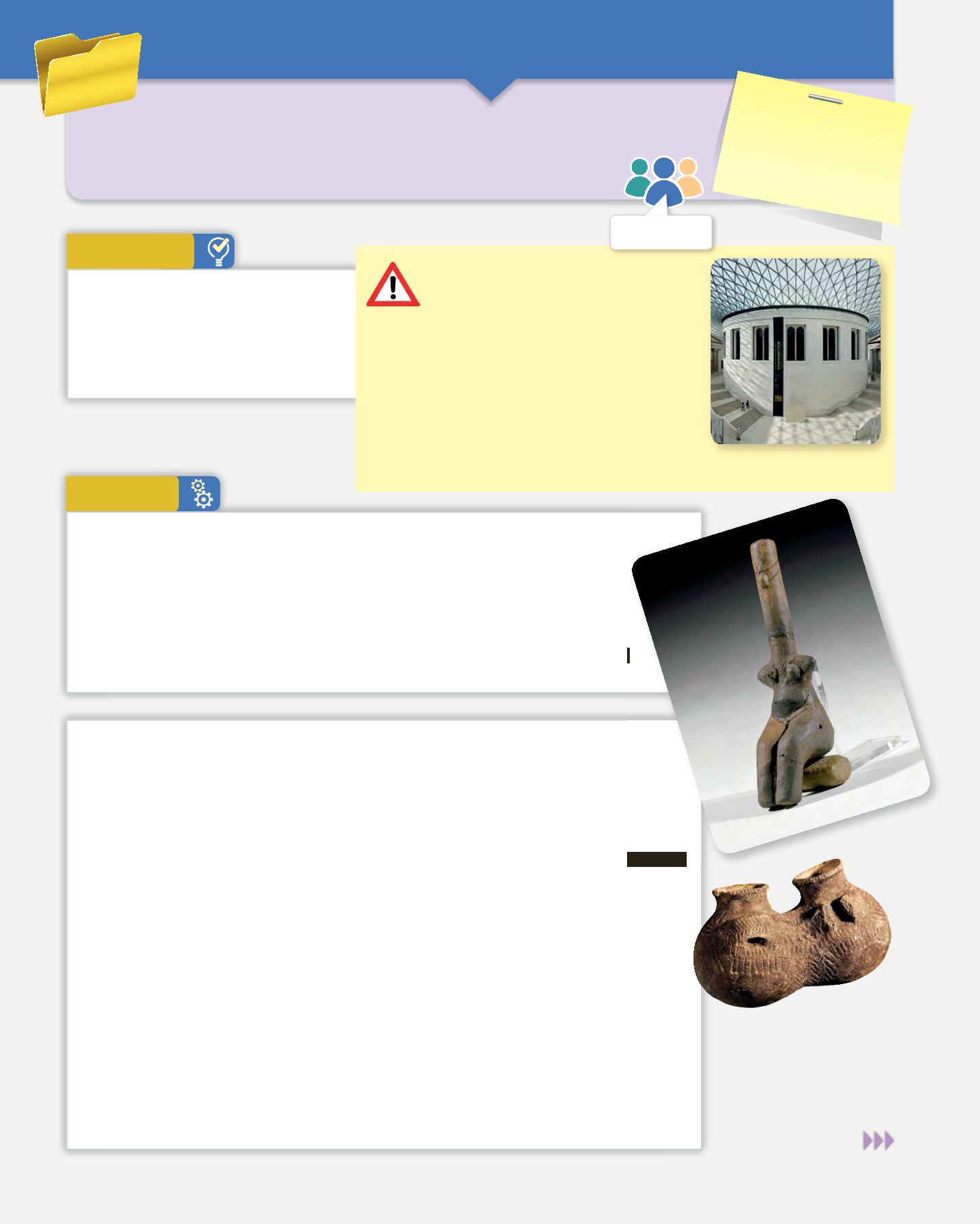
OUP00_CABECERO_BLANCO
OUP00_CABECERO_BLANCO
2
42
2. The Neolithic period and the Bronze and Iron Ages
Follow these steps to complete the task:
❚
Before the visit
– Listen to the recommendations your teacher makes about how to behave
when you visit a museum. If your visit is virtual, take notes of the rules of the
museum you are investigating.
– Read the card that you need to fill in at the end of your visit. Are there any
other aspects that you would like to add?
Procedure
What museums show us
2
In this task you are going to visit a museum in person or virtually and write a report
about one of the exhibits. You are also going to write a letter explaining what you
enjoyed and didn’t enjoy during your visit and what you think could be
improved.
You are going to do this task in pairs.
Your teacher may organise a group visit
to a museum. Alternatively, you could go
with an adult or visit one virtually. You will
need to select a museum which is relevant
to what you have studied in this unit.
Preparation
MATERIALS
❚
Notebook
❚
Computer with Internet
access
Top: Female figurine from
the late Neolithic Period from
Karanovo (Bulgaria)
Bottom: Neolithic joined
vessels decorated in the
Cardial style, found in the
cave de l’Or (Alicante)
REPORT GUIDELINES: WHAT MUSEUMS SHOW US
1. If you visited the museum, rate the following from 1 to 5:
❚
The building which houses the museum and its infrastructure.
❚
The layout of the museum and how the exhibits are presented.
❚
The clarity of the information given about each object.
2. If you didn’t go in person, evaluate the museum’s web page. Rate the following from 1 to 5:
❚
The design of the web page.
❚
The navigation of the page.
❚
The quality of the images of the exhibits.
❚
The clarity of the information which accompanies the images.
3. Guide to observing the exhibits and analysing an object.
❚
What is exhibited in this museum? Which rooms, galleries, display cases did you visit?
Which object attracted your attention most and why?
❚
What does the object represent? Where is it from? Why was it made? How was it
made? How was it used? What material is it made of? What other objects were made
of this material?
❚
Who made the object? How did they make it and why? Was it made by an artist? If
so, why?
❚
What present-day object is it similar to? Why is this object important to us?
Interesting links:
National Archeological Museum (Madrid)
Prehistory Museum (Valencia)
Archeological Museum (Alicante)
Archeological Museum (Asturias)
Zaragoza Museum
Interior of the British
Museum, London
In a group or
individually


